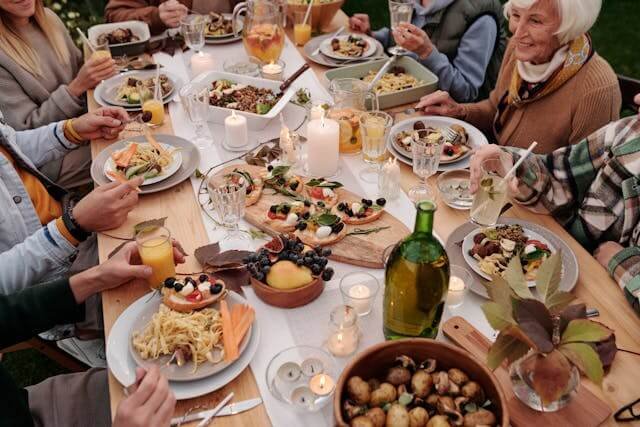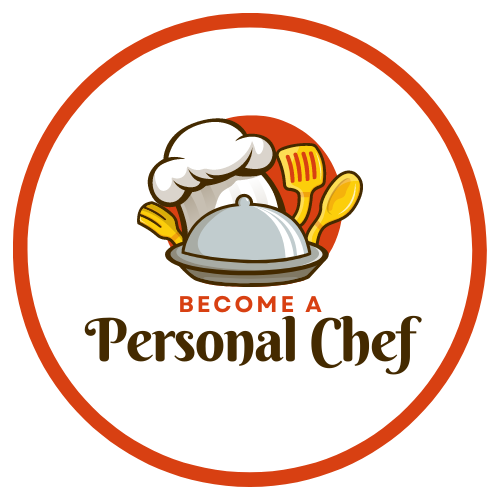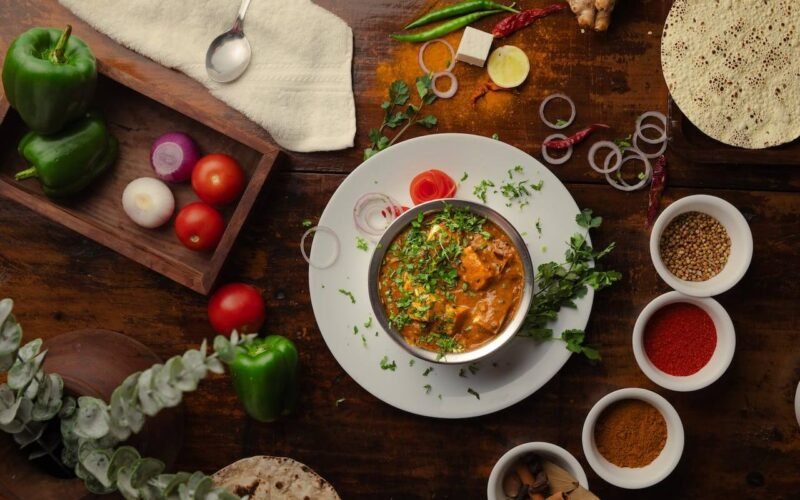Table of Contents
ToggleWorld Cuisine for Personal Chefs
In recent years, the demand for personal chefs has grown noticeably. Clients want someone who can create unique and flavorful dishes catered to their specific preferences. Aspiring personal chefs need to offer something different than traditional chefs who specialize in one or two kinds of cuisines.
To succeed in this highly competitive field, it is necessary for personal chefs to have a global perspective on cooking. In this blog post, we are going to discuss the top world cuisines personal chefs should learn and how broadening their culinary horizons will place them ahead of the competition.
So, get ready to expand your palate!
Italian cuisine is the epitome of comfort, from hearty lasagnas to creamy risottos. Each bite is a symphony of fresh ingredients, seasoned to perfection with herbs and spices.
Japanese cuisine is a delicate balance of sweet, sour, salty, and umami flavors. Whether it’s sushi, ramen, or tempura, each dish is meticulously presented, reflecting the country’s deep appreciation for aesthetics.
Greek cuisine is a Mediterranean delight. With its selection of fresh salads, grilled meats, and olive oil-drenched dishes, it’s a true celebration of the region’s abundant produce.
Spanish food is all about sharing. From paella to tapas, each dish is packed with robust flavors, often featuring seafood and cured meats.
Lebanese cuisine is a tantalizing blend of Middle Eastern flavors. It’s known for its mezza – an array of small dishes, including falafel, hummus, and tabbouleh.
Thai food is a feast for the senses. It combines hot, sour, sweet, and salty flavors in harmony, resulting in dishes like Pad Thai and green curry that are both vibrant and comforting.
Indian cuisine is a rich tapestry of flavors, with each region offering its unique dishes. From spicy curries to sweet desserts and flavorful street food, it’s a culinary journey through a diverse culture.
Mexican cuisine is a fiesta of flavors. Tacos, enchiladas, and tamales are bursting with the flavors of chilies, cilantro, and lime, often accompanied by beans and rice.
Turkish food is a mix of Central Asian, Middle Eastern, and Balkan cuisines. Its kebabs, mezes, and rich pastries like baklava are famous worldwide.
French cuisine is a culinary art form. From coq au vin to crème brûlée, each dish is carefully prepared, often involving slow cooking methods to draw out delicate flavors.
Chinese cuisine is incredibly diverse, with flavors ranging from sweet and sour to spicy and savory. It’s renowned for its noodles, dumplings, and stir-fried dishes.
Vietnamese food is a blend of Asian and French influences. Pho soup, spring rolls, and banh mi sandwiches offer a delightful mix of fresh ingredients, herbs, and meats.
Moroccan cuisine is a fragrant blend of North African, Arabic, and Mediterranean cuisines. Tagines, couscous, and pastillas are slow-cooked to perfection, often sweetened with fruits and honey.
Peruvian food is a fusion of indigenous, Spanish, African, and Asian influences. Its ceviche, lomo saltado, and anticuchos offer a tantalizing mix of flavors.
Brazilian cuisine is a melting pot of Portuguese, African, and native influences. From feijoada (black bean stew with pork) to acarajé (deep-fried ball of black-eyed pea dough filled with shrimp), it’s a carnivore’s delight.
Korean cuisine is a spicy adventure. Dishes like kimchi, bibimbap, and bulgogi are served with a variety of side dishes known as banchan.
South African food is a mix of indigenous, Dutch, and British influences. Biltong (dried, cured meat), boerewors (homemade farm sausages), and bunny chow (hollowed-out bread filled with curry) are beloved staples.
Ethiopian cuisine is communal and vibrant. Dishes like doro wat (spicy chicken stew) and injera (sourdough flatbread) are often eaten by hand from a shared plate.
Filipino food is a fusion of Malay, Chinese, Spanish, and American influences. Adobo (marinated meat), sinigang (sour soup), and lechon (whole roasted pig) are just a few of the hearty favorites.
Malaysian cuisine is a vibrant blend of Malay, Chinese, and Indian influences, creating dishes that are flavorful and aromatic. Nasi lemak, satay, and laksa are some of the must-try dishes.
Portuguese cuisine is a sea lover’s delight, with dishes like bacalhau (salted cod) and caldo verde (green soup). The sweet tooth is catered to with pastéis de nata (custard tarts) and bolo de arroz (rice muffins).
Russian food is hearty and comforting, from borscht (beetroot soup) to pelmeni (meat dumplings). Don’t forget the blini (thin pancakes), often served with caviar or sour cream.
Cuban cuisine is a fusion of Spanish, African, and Caribbean flavors. Ropa vieja (shredded beef), black beans, and plantains are staples, often accompanied by a mojito.
Jamaican food is bold and spicy, with jerk chicken and patties being popular dishes. Its national dish, ackee and saltfish, showcases the island’s unique ingredients.
German cuisine is robust and hearty, with a variety of wursts (sausages), sauerkraut (fermented cabbage), and pretzels. They’re also known for their delicious beer and strudels.
Polish food is satisfying and rich, characterized by pierogi (dumplings), bigos (hunter’s stew), and kielbasa (sausage). Their sweets like paczki (jelly-filled doughnuts) are also worth trying.
Irish cuisine offers warm comfort, from Irish stew to colcannon (mashed potatoes with kale or cabbage). And of course, there’s the famous Irish breakfast, complete with black pudding.
Australian food is diverse, from barbecued shrimp to meat pies. Don’t forget Vegemite on toast, and for dessert, the Pavlova meringue cake.
Swiss cuisine is more than just cheese and chocolate. Think hearty rösti (potato dish), Zürcher geschnetzeltes (creamy veal dish), and fondue.
Argentine food is a carnivore’s dream, with asado (barbecue) and choripán (sausage sandwich) being popular. Their sweet pastries like facturas are also worth a try.
Canadian cuisine includes comfort foods like poutine (fries with gravy and cheese curds) and tourtière (meat pie). Don’t forget the sweet, sticky delight that is maple syrup.
Hungarian food is rich and comforting. Goulash (meat and vegetable stew) and lángos (deep-fried flatbread) are popular, often seasoned with the country’s famous paprika.
Swedish cuisine is known for its gravlax (cured salmon), meatballs, and herring dishes. And of course, there’s the iconic smörgåsbord.
Danish food is simple yet satisfying, with smørrebrød (open-faced sandwiches) and frikadeller (meatballs) being popular. For dessert, try the kanelstang (cinnamon pastry).
Finnish cuisine utilizes local ingredients like berries, mushrooms, and fish. Must-tries include Karelian pies (rice or potato pastry) and salmon soup.
Belgian cuisine is famous for its waffles, chocolates, and fries. Its mussels and beer-braised stews are also well-loved.
Dutch food is straightforward and hearty, featuring dishes like herring, stamppot (mashed potatoes with vegetables), and cheese. For dessert, try the stroopwafel (caramel-filled waffles).
Indonesian cuisine is diverse and flavorful, with dishes like nasi goreng (fried rice), satay, and rendang (spicy meat dish). Sambal (chili paste) adds a spicy kick.
Singaporean food is a melting pot of Chinese, Malay, Indian, and Peranakan influences. Don’t miss the Hainanese chicken rice, laksa, and chili crab.
New Zealand cuisine offers delights like lamb, seafood, and kumara (sweet potato). The iconic pavlova and hokey pokey ice cream make for sweet endings.

The remaining ten are regional American cuisines, each with their unique flavors and specialties:
Southern cuisine, known as “soul food,” is comfort on a plate. Think fried chicken, biscuits and gravy, and peach cobbler.
Cajun and Creole cuisines offer a spicy mix of French, African, and Spanish influences. Signature dishes include gumbo, jambalaya, and crawfish étouffée.
Tex-Mex is a fusion of Mexican and American cuisines, characterized by nachos, fajitas, and chili con carne.
New England cuisine features seafood prominently, including clam chowder, lobster rolls, and clambakes.
Pacific Northwest cuisine highlights local ingredients like salmon, berries, and mushrooms. Dungeness crab is a regional favorite.
Hawaiian cuisine is a fusion of Polynesian, Asian, and American influences. Poke bowls, spam musubi, and the traditional luau pig are island favorites.
Soul food is comfort food with African-American roots. Fried chicken, collard greens, and sweet potato pie are staples.
Southwestern cuisine is known for its use of beans, corn, and chili peppers. Dishes like tamales and enchiladas are popular.
Midwestern cuisine is hearty and comforting, featuring dishes like hotdish (casserole), bratwursts, and Chicago-style pizza.
California cuisine emphasizes fresh, locally sourced ingredients, often prepared simply to highlight their natural flavors. Avocado toast, salads, and fresh seafood are typical.

Wondering what tools a personal chef might need? I’ve written an extensive article for you – A Comprehensive List Of Must-Have Tools and Essential Items for the Personal Chef
World Cuisine for Personal Chefs
In the world of personal chefs, having a broad knowledge of multiple culinary cultures sets you apart from the rest. By diversifying your expertise, you will open doors to more clients and opportunities. Knowing different and unique globally inspired dishes can take you down a path of intrigue and creativity. Aspiring personal chefs should consider investing time to broaden their cooking horizons to keep up with the growing demand for culinary diversity.
Remember, the global palate is your playground!
Here are some of my favorite tools for providing my personal chef service
As an experienced personal chef, I’ve found that the secret to creating mouthwatering dishes goes beyond just having a passion for food. It’s also about using the right kitchen tools. Today, I’m going to share with you my must-have kitchen items that help me bring my culinary creations to life.
1. Chef’s Knife
The first item on my list is a high-quality chef’s knife. It’s the most versatile tool in my kitchen, perfect for chopping, slicing, and dicing. My preference is for a Global Chef’s Knife, known for the edge and the way they are balanced.
2. Cast Iron Skillet
Next up is a good old cast-iron skillet. From searing steaks to baking cornbread, this pan does it all. I love the Lodge Cast Iron Skillet, which retains heat beautifully and adds a nice crust to anything you cook.
3. Stainless Steel Pots and Pans
A set of stainless steel pots and pans is essential for a variety of cooking techniques. They’re great for simmering, boiling, and sautéing. All-Clad’s Stainless Steel Cookware Set is my go-to choice for its exceptional performance and durability.
4. Immersion Blender
An immersion blender makes pureeing soups, making smoothies, and blending sauces a breeze. I suggest the Braun Multiquick Hand Blender, which is powerful, easy-to-clean, and highly versatile.
5. Digital Thermometer
To ensure perfectly cooked meats every time, a digital thermometer is a must. The ThermoPro TP19 Waterproof Digital Meat Thermometer provides speedy and accurate readings, ensuring your roast chicken or prime rib is cooked to perfection.
6. Silicone Spatula
A silicone spatula is a chef’s best friend for its versatility. It’s heat-resistant, non-stick, and perfect for everything from folding batter to stirring sauces. I recommend the OXO Good Grips Silicone Spatula.
7. Stand Mixer
Lastly, for avid bakers, a stand mixer is a game-changer. The KitchenAid Artisan Series 5-Qt. Stand Mixer isn’t just a pretty face; it makes mixing doughs and batters effortless.
These are the tools that I use daily in my personal chef service. Remember, quality tools make a difference, but they don’t have to break the bank. Start with the basics and add on as you grow more comfortable and adventurous in the kitchen.
Happy cooking!

